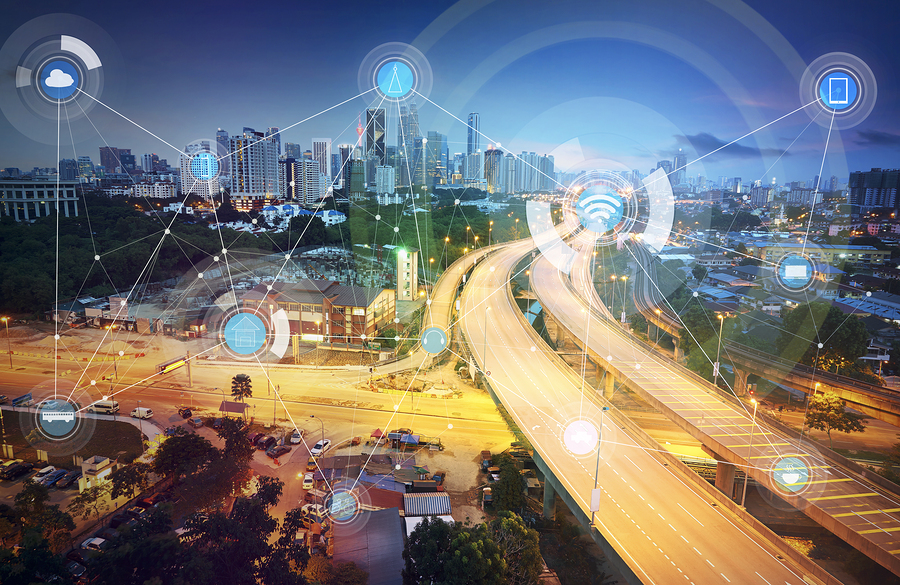
Thanks to the Internet of Things (IoT) more and more devices are connected, including homes, heating systems, fitness trackers, vehicles and more. Gartner projects that IoT devices will climb to a total of 50 billion by 2020, up from 20 billion, and this demand will drive the need for edge computing for data collection and processing.
Edge computing processes data close to the source, allowing real-time data and analysis and improving reliability, performance, and cost. According to the IDC, the global edge analytics market will grow 27.6% CAGR (compound annual growth rate) between 2017 and 2025, a result of the uptick in connected devices.
A Need for Speed
The volume of data generated by IoT devices is growing just as rapidly as the number of devices themselves, and needs to be processed quickly for faster response time and reduced latency. This is critical for businesses who are exploring tech capabilities for revolutionary computing solutions. An extension to the cloud, edge computing enables them to delve deep into data, conduct analytics and make informed decisions. Edge computing also helps alleviate security and privacy concerns.
In a panel of experienced data center executives, Joel Stone, of RagingWire Data Centers, noted, “Edge computing in its most raw form exists in the palm of your hand. True edge computing is pushing the computational load down to the ubiquitous smart phone or tablet devices; because the edge is where the internet meets the physical world.”
5G is Coming
The significant consumer demand for higher speeds leads us to the advent of 5G, which focuses on mobile broadband, low-latency communications and massive machine technologies such as autonomous vehicles (AV). 5G communication is projected to perform upwards of 1000 times faster than 4G, making devices respond in a matter of milliseconds. That means consumers will be able to download a full HD movie onto a mobile device in a matter of seconds. Edge computing will play a pivotal role here, solving a variety of challenges, such as latency, governance, security and monitoring.
With the arrival of 5G comes a change in modeling for edge computing. As a result, the methods, locations and technologies used to deploy infrastructure are changing for data center providers, software developers and more.
Infrastructure of the Future
One company making concrete steps toward the infrastructure of the future is Crown Castle, a leader in cell tower infrastructure. Although cell towers connect millions of devices to the Internet and other phone services every day, the high volume of tower usage, along with the distance, harm latency on the network. Fast, reliable network performance is a necessity with edge computing, and cell towers may not be good enough for the next generation of devices that use 5G.
Crown Castle has shown an interest in the deployment of edge computing and 5G use cases, investing heavily in Vapor IO, a company entrenched in edge computing applications and devices. Crown Castle CEO Jay Brown mentioned edge computing in a Q4 2017 earnings call, saying, “The development of future technologies has the potential to further extend the runway of growth. Emerging technologies, including 5G, autonomous vehicles, augmented or virtual reality and Internet of Things applications will require mission-critical network infrastructure that provides availability anywhere at any time on any device.”
Prepare Your Organization for the Edge
Is your organization making an investment in edge computing? Preorder IEEE’s Introduction to Edge Computing, a new 5-course program coming soon, and train your entire technical team to support this critical technology. It could be your most valuable investment in preparing for the edge.
Resources
Curry, David. (29 May 2018). Cell Tower Companies Look Into Edge Computing Deployment. RTInsights.com.
Miller, Rich. (21 Jun 2014). IoT and Latency Issues Will Guide Edge Deployments. Data Center Frontier.
(31 May 2018). Here are 3 uses of edge computing in today’s world. moneycontrol.com.
(13 Jun 2018). Here’s how edge computing will revolutionise 5G experience. moneycontrol.com.


Nice Information!! We have already begun to hear rumors about the market launch of 5G technology and the revolution that it will entail in all areas of people’s lives. But, what benefits will this new technology bring to us? Will it have all the advantages or will it have any disadvantages? Here’s we discuss the top advantages of 5g technology.